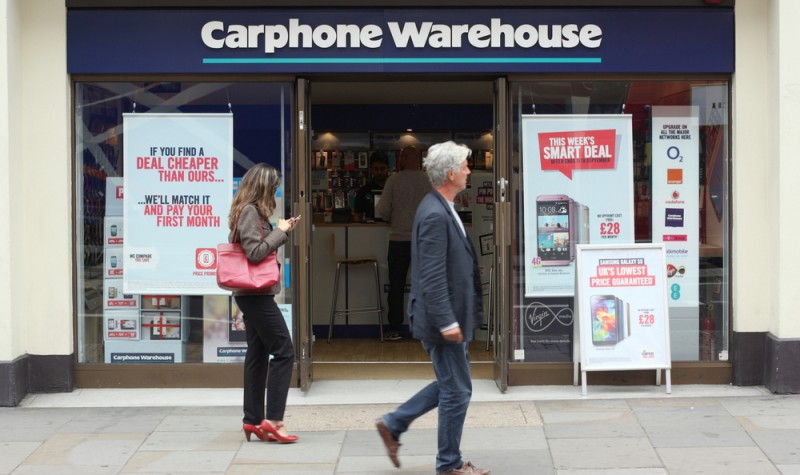Is it time to hang up Dixons Carphone?

After figures for year to 31st March 2015. With the share price up 12% in only four months (an implied annual growth rate of about 36% or so) what now?
In a note I wrote on Dixon Carphone (DC.) late last March in another place (the very last of them as it happens) I wrote the following:
“The final year and fourth quarter results to March 31st 2015 will not be known until next June. My own reading of the share price chart is of a share trending upwards. The company has plenty of scope for boosting margins and returns at a time when low consumer price inflation in putting some more spending power into the hands of consumers. I guess that news from company will emerge to justify current consensus expectations. I judge that this fall back in the share price is an appropriate entry point for new investors who like the prospect of progress through management and improving operational efficiencies.”
The shares were then 435p. They subsequently reached a peak of 490p earlier this week, representing a capital appreciation of 12.6% in a little over four months.
My interest had begun in late May last year when I had spotted the Dixons share (pre merger) as looking attractive when its share price was 44p (about 300p a share in the new post merger share form) prior to and because of the then agreed merger between Dixons and Carphone Warehouse. The share priced had previously risen to 470p, before weakening and falling back to the 435p where I came in as a convinced buyer for a second time. So what has fortune brought my expectation at that stage? And what do investors do now?
In the year to 31st March 2015, the company’s gross margins remained firm and like for like sales rose at an impressive 6%. It is worth noting that in the final seventeen weeks of the year, like for like sales actually increased 9%. White goods demand was strong in response to the UK economy finally catching up with other nations’ economic growth, which had come out of the recession much earlier than the UK. White goods like for like sales increased by 13%. In a ruinously competitive market, it benefited from the demise of Comet and others. Since then, Dixons’ market share has risen even further, enhancing its prospects.
This cyclical business has healthily reduced its debt to equity gearing from an earlier 45% to a reported 13% – which definitely improves the quality and reliability of earnings. It has at the same time, resumed investment which rose from zero the year before to £358 million last year. The dividend was also increased by 20%. At the same time, cash in the year end balance sheet rose from £117 million the year before to £283 million. The full annul dividend cost after the payout increase was still only £30 million.
With much lower debt finance, the management looks as though it will be financing investment in the business with cash flow. Consequently, growth in earning this year is likely to slow to around a consensus 16%, which puts the shares on a fair value PEG measure. The dividend in terms of cash cost and yield, are both smallish but useful. At the current price the prospective consensus dividend yield is 1.9%, which leaves plenty of room for additional growth as and when investment spending declines at some future stage, as one assumes it will.
The share price is still on an uptrend, though it has room to come down a bit within that trend. I judge the shares to be a strong hold at this stage. The combination of improving UK consumer spending, combined with improved operational efficiency within DixonsCarphone, makes the shares attractive in the medium and longer term. Should the share price come down to around 440p they will then be attractive short term as well.
Comments (0)